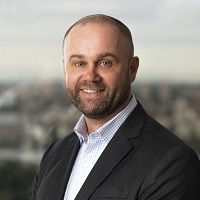Director Digest: Shane Little, Regional Managing Director APAC - Part 1
BLOG

DIRECTOR DIGEST: SHANE LITTLE, REGIONAL MANAGING DIRECTOR APAC - PART 1

People power our success.
And we’re fortunate to have some of the very best leading our operations across the globe, showcasing innovation, creativity and a real passion for solving the problems our clients face when it comes to sourcing, attracting and retaining top talent.
Their experience and insights are fundamental to Hays and sharing this vision enables us all to deliver the tools, technology and insights that will inform your workforce strategy.
Which is why we’re introducing a new series, ‘Director Digest’. In the first installment, Shane Little, Managing Director for the APAC (Australia, New Zealand and Asia) regions, offers an insight into the challenges and opportunities encountered as we offer workforce solutions across the world’s largest continent.
Unique markets, unique opportunities
I’m fortunate to oversee our operations across Australia, New Zealand and Asia. While they are grouped together in name, it is the diversity of these markets that makes my job so rewarding – and at times, challenging.
If you look to Asia, for example, we have a presence in seven countries across the continent, and the maturity of those marketplaces ranges dramatically between Hong Kong and India as an example.
When you talk to customers, they want different things. They use different languages and have differing cultural nuances that surround how they purchase goods and services.
Prior to my first ever meeting with a customer in Japan, for example, I undertook training that covered where to stand, where to sit, how to hand over a business card and how to greet people. The challenge is to understand and embrace cultural diversity.
This offers an opportunity to build better teams, ones that reflect the communities in which we operate.
That isn’t to say that the value of international mobility isn’t still paramount. It absolutely is. Some of our most successful businesses across Asia have been established and run by people who started their Hays careers in other parts of the world – and having a global talent pool from which to form teams is important.
But in Asia in particular, we talk about sustainable leadership. This is about leaving a leadership footprint and DNA for the medium to long term that represents the countries, regions, territories and localities that we live and operate in.
The heart of the Hays culture rings true, whether you’re in Hong Kong, Sydney or Christchurch. That passion for people and the desire to deliver a service that changes lives remains consistent. But the look and feel of those teams will be different – and that is key to diversity and inclusion. It’s not about having the ‘same face’ for our business all around the world.
A growing gig economy?
77% of executives believe that freelance and gig workers will substantially replace full time employees within the next five years.
When you reflect on the APAC region, the story is a little different.
I co-presented at a contingent workforce conference in Sydney nearly 6 years ago. There was a lot of talk at that stage about 50% of the Australian workforce being non-permanent within five years.
While the appetite to engage labour in a different way does exist in places like Australia, New Zealand and Singapore, the regulatory framework has not been able to keep pace with the desire to enable a more mobile and agile workforce.
The result is that people are still viewing work on a non-permanent basis as a less attractive path to follow because you aren’t afforded the same level of stability and security.
If you step into some of the less developed workforce models in Asia, such as India or China, being employed on a permanent basis brings with it a much higher level of kudos. Often, people operating in the gig economy are viewed as second-class employees.
So while there is plenty of anecdotal feedback and evidence, I personally don’t see the contingent workforce accelerating at the same levels that we have been talking about for the past three or four years.
The implications of restricted movement
When the COVID-19 pandemic hit a few years ago, Asia, New Zealand and Australia implemented some of the toughest restrictions on movement.
The impact on sourcing and attracting talent has been enormous.
I’ve worked in the Talent Acquisition and Recruitment industry in Australia since 2004 and have experienced a variety of economic cycles, including the Global Financial Crisis. However, I think the last 12 months has been – and continues to be – the most candidate short environment that Australia and New Zealand, in particular, have ever operated in.
When Australia began to reopen from a retail perspective, for example, you would frequently see a bar or restaurant forced to close for the weekend because it had no staff. The level of access to international students and the back-packer population who fulfil these jobs was too limited.
Similarly, when looking at digital industries such as development or cyber-security, Australia and New Zealand have traditionally relied on locations such as India from which to source talent. With the onset of the pandemic, these pools were effectively closed off.
The good news is that with the reopening of borders, you’re already beginning to see the ‘trickle effect’. A few months in, the trickle of international students and travelers has become a steady flow, not just of students but also of qualified migrant workers eager to secure sponsorship.
It will take time to regain momentum, but it’s a great thing for countries to have culturally diverse workforces – it's good for education, good for the advancement of how we get work done and it’s good for people.
Of course, the pandemic has exposed how fragile some systems are, and we need to question what that means for the Talent Acquisition industry, as well as Hays more specifically.
It will require us to be more creative than ever before in terms of utilising local and domestic sourcing channels, and our team will need to be ‘slicker’ in the ways we manage our application funnels, forcing us to focus closely on the candidate experience.
The conversation continues
There is so much more that could – and must – be said about these regions, and the role that an agile workforce strategy will play in ensuring organisations have the talent they need to drive forward their ambitions in 2022, and beyond.
In Part 2, I’ll dive a little deeper into the implications of instilling a culture of wellbeing and inclusion across these countries, as well as reflecting on the agility required from organisations in order to thrive in the new world of work.
AUTHOR

Shane Little
Managing Director APAC, Hays Talent Solutions
As Managing Director for APAC at Hays Talent Solutions, Shane is responsible for the delivery of market leading Talent Solutions to a range of clients across Australia, New Zealand and Asia. He has a unique insight into total talent management, talent acquisition and contingent workforce programs having been involved in early stage PSL arrangements, first generation programmes and mature workforce solutions.

